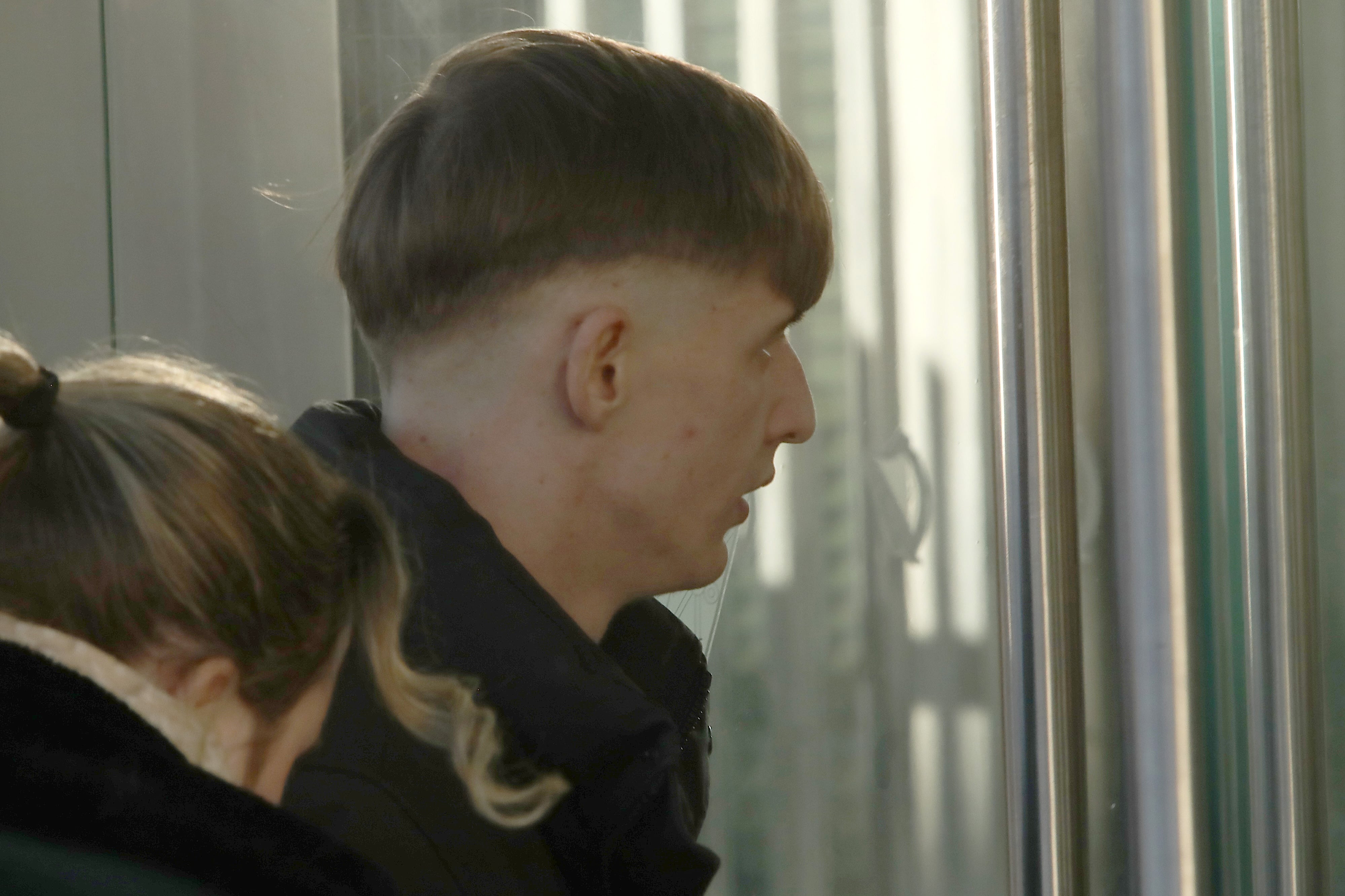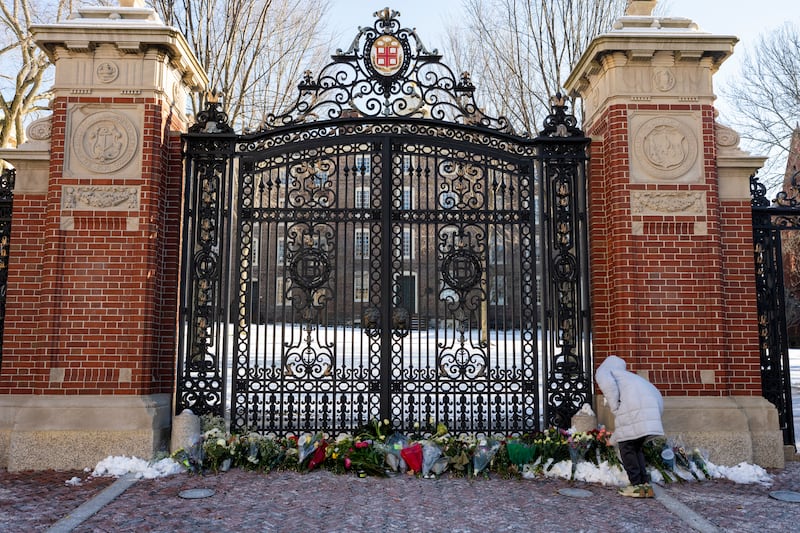Ten years ago the Doolin Coast Guard unit was at the peak of its powers. It was among the busiest, largest and best trained units in the country. The volunteers were just weeks away from moving into a new €2 million rescue centre, something that had been campaigned for locally for more than two decades.
Now the Co Clare unit is a shadow of its former self. Rocked by the death of Caitríona Lucas in 2016, and divided by infighting, it has haemorrhaged volunteers, with more than 100 years of life-saving experience leaving in recent years.
Caitríona Lucas (41), who worked as a librarian, died during a Coast Guard search mission near Kilkee on September 12th, 2016. The mother of two from Ballyvaughan died after a freak wave hit the rescue boat and tossed the three crew into the sea. The cause of death was drowning and a head injury was a contributory factor. She was the first Coast Guard volunteer to die while on active duty.
Today the current unit does not have enough experienced members to operate a climbing team, a critical part of the rescue and recovery service at the Cliffs of Moher. This deficiency was highlighted earlier this month when a team of divers had to make a 550km round-trip from Monaghan to Clare to recover the body of 17-year-old Armagh student Lochlann Murray from the foot of the cliffs.
READ MORE
The Rockcorry Divers were assisted in the mission by Caitríona’s husband Bernard Lucas, who is one of many former members who have left the service in recent years.
Mr Lucas, who has more than 20 years of experience in the Coast Guard, says he has now decided to establish a new, independent rescue service at Doolin.
“It was a great unit to be part of when I joined. We were probably the best unit in the country. We were definitely the busiest, and we were probably the best as well. You couldn’t wait for a Tuesday night to go training,” he says. “But that started to change maybe 10 years ago. It didn’t happen all at once but it creeped in bit by bit and it festered.”
After the death of his wife Bernard says he needed the Doolin unit more than ever. It was his second family, one that he and Caitríona both cherished. After a year, however, infighting in the unit began to take its toll and he took a break from service for two years.
When he left in 2017 he was an experienced coxswain, one of the most highly trained members of the Irish Coast Guard. When he returned in 2019 he was made a trainee crew member, the lowest ranking member of the Doolin unit.
“I needed to go back straight away [after Caitríona’s death]; I needed it. It was a huge part of our life together. It might sound a bit strange, but I needed to go right back to the unit after the accident,” he says.
“But when I came back in 2019 it was very difficult. I was demoted. When I left I was a full advanced trained coxswain, when I came back I was broken right down to a trainee crew again. It was the equivalent to a new person coming into the unit who might never have seen the end of a boat.”
Between 2019 and 2022 at least six more volunteers resigned from the Doolin crew. In 2022 the Irish Coast Guard decided to reconstitute the unit, asking volunteers to reapply individually to rejoin the team. Mr Lucas and nine other colleagues applied to rejoin as one group but their application was rejected.
“We were meeting and chatting about it and we decided that we were interested in joining the unit, the 10 of us, together,” says Lucas. “We said we were applying as a group, not as individuals, because we felt we had been badly treated. Of course that wasn’t going to fly, they weren’t going to take us back. They wanted to hand-pick the team.”
Former caver Tom Doherty, who has 34 years of experience in the Doolin unit, is one of the 10 members who reapplied together. He says trust in one’s colleagues is vital in such a unit.
“You have to be able to trust the people you are with, whether you are on the cliff’s edge or in the boat. You need people who are watching your back,” he said. “I tried talking to everybody, but looking back on it now I don’t think we were wanted in the unit. It felt like we are being pushed out. That was hard. It was very hard to take.”
Deirdre Linnane was a close friend of Caitríona Lucas. She says she used to love volunteering for the Coast Guard but the atmosphere in the unit became so toxic that she had no choice but to leave.
“The Coast Guard used to be a break from my life, but it became very stressful so I opted out,” she said. “My son was three at the time and when I went on call-outs, he would go to my mother’s. When I would go he would cry the place down. He would scream that ‘she is never coming home’. I used to hide it as much as possible but he obviously picked up on what was going on. I was very sad for a long time after losing Caitríona.”
In a statement a spokeswoman from the Department of Transport acknowledged that there were “unresolved interpersonal issues” in Doolin, but that the Irish Coast Guard has full confidence in the capabilities of the current unit.
“Prior to 2022 the Doolin Coast Guard unit had several years of significantly unresolved interpersonal issues which served to create a strained working environment,” said the spokeswoman. “A highly experienced independent mediator was appointed, who concluded that the interpersonal difficulties were not capable of being resolved through the normal mediation process.
“It was recommended that the team be reconstituted, with those members who could work and operate together in a collegiate and co-operative manner reinstated. IRCG proceeded in accordance with these recommendations and the Doolin Coast Guard unit has gone from strength to strength since. The unit have continued to progress their operational capability, taking on additional volunteers and working with the support of neighbouring Coast Guard units.
“Morale within the unit is positive, aiding the effective delivery of service and evidenced in the unit having responded to approximately 140 incidents in the period since reconstitution.”
Over the past two years former members of the Doolin unit have been assisting in recoveries in a private capacity when required.
Lucas notes the current unit does not have a climbing team. “They don’t have the people for it. And they don’t really have a crew for the boat either unless all the stars align and everyone turns up,” he says. “Myself and Tom [Doherty] and others have helped recover a few bodies over the last few years. We haven’t said a lot about it, just did what we had to do.
“People are cross, they are angry, especially with that young boy [Lochlann Murray]. A team had to come across from Monaghan to recover him.”
Lucas and some fellow former Coast Guard members have now decided to form a new independent rescue service in Doolin. Their first aim is to secure insurance and put a climbing team in place, which he says will greatly assist recoveries at the Cliffs of Moher.
“We are in the process of getting insurance at the minute. It was one thing when two or three of us were going out off our own bat, but if you are setting up something and asking others to join you need insurance,” he says.
“At the moment we have 10 people who are interested in getting involved in this new group and if that grows over the years, brilliant. But, yes, insurance, funding, it’s a big job. We are starting with nothing. We need everything. We have a team, but we need everything else. What we have at the minute is our experience and our bodies.”
- Sign up for push alerts and have the best news, analysis and comment delivered directly to your phone
- Join The Irish Times on WhatsApp and stay up to date
- Listen to our Inside Politics podcast for the best political chat and analysis












